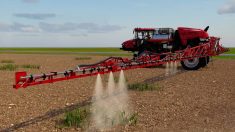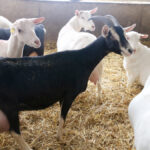Cycle repeats A different marketing system is needed, says a longtime industry recipient
“What’s going on with the lamb prices?” This is a common question of late. In my May article for Saskatchewan’s provincial lamb newsletter I encouraged producers to recognize that last year’s prices were record setting, and that there would be some moderation this year. Slaughter lamb prices were very high last year, which translates into high lamb prices in stores. This normally creates consumer resistance and a moderation in prices would be required to increase consumption. To add to this, the high cost of feed grains would make feeding lambs less attractive and the price gap between slaughter and feeder lambs would narrow.
Read Also

Guarding against misinformation: Do you believe in house hippos?
Misinformation and disinformation run rampant in today’s digital age. Farmers must be wary of the digital dangers and know how to keep themselves safe.
The numbers indicated no reason for a significant decrease — stocks of frozen and chilled lamb and mutton down four per cent and meat imports down 19.4 per cent over the same period last year, and a slight decrease in consumption in 2011 to 0.9 kg per person from 1.07 kg in 2010. Ewe numbers were up 0.6 per cent, replacement ewe lambs up 4.1 per cent and market lamb numbers up 4.9 per cent over last year. Nothing substantial and there was a shortage of lambs.
Well, my market assessment/prediction was not accurate. So what’s happening?
The weather
Currently there is a backlog of heavy lambs created by a lack of demand. Consumption is way down due to the extremely hot weather in Canada’s largest lamb market.
Prices paid for lambs last year were not supported by product marketing. Consumers will pay more when there is perceived value. We asked them to pay more but did they perceive more value?
Lamb prices were driven up to a level which was not good for the industry as a whole. Producers did very well; buyers and processors did not. This year buyers and processors are being cautious as there is pressure to recoup losses from last year.
As predicted, there is also a worldwide price correction. The price of lamb is down in many countries, not just in Canada. Last year prices were an all-time record. We knew this was not the new norm.
Lamb slaughter plants are in control and there’s currently a backlog of lambs — simply a supply-and-demand issue.
Panic selling
Auction mart numbers to date are up, created in part by producer panic rather than an actual increase in supply. Flock expansion was very modest across Canada over last year. Adding to the panic are weather conditions creating feed shortages and high feed costs in the East and the U.S.
The U.S. drought is driving up feed prices and driving lamb prices down. Heat is also reducing consumption. The markets in the U.S. have collapsed, making it attractive for processors to bring up American lambs. They are coming up by the truckloads. Buyers are cautious because of the degree and speed of the collapse in prices. I’ve talked to many who bought lambs they thought were at fair prices. By the time they got possession or sold them the price at the plants had dropped to levels to where buyers were losing money. In one case the price dropped $40 cwt in one week.
High feed costs such as $8.85-a-bushel corn and $5.75 barley, the heat and price decline make feeding lambs extremely risky and not very attractive, thus the poor feeder lamb prices.
Put it all together and the results are what we are seeing now. So when will the price rebound?
I am somewhat reluctant to make a further prediction as you know how good my last one was. But again going back to the numbers, I have some thoughts. Once we get through this backlog of heavy lambs and the weather moderates and starts to cool down in fall, consumers will again start eating lamb. We will eat our way through this. We are not in an oversupply situation as a whole in Canada. Only the timing of a number of factors created this situation. Consumers ate lambs last year at very high prices. With prices moderating, consumption should go up again. I encourage producers to hang in there. We are coming off an extremely good year last year which makes this hurt even more. Consider lamb prices over the last few years.
Marketing changes needed
Long term, I feel we need to make some fundamental changes to the way we market Canadian lambs. To keep producers in the industry and attract new entrants, producers need to be profitable. What’s happened recently will set the industry back once again. This frustrates me as I’ve seen this cycle over and over again. We’ve all heard the saying, “The definition of insanity is doing the same thing over and over again and expecting different results.”
The history of the lamb industry for the most part is this; it gets rid of its lambs; it does not market them.
What’s happening to producers right now is exactly why the Canadian Lamb Producers Co-operative is being developed. We’ve travelled across this country talking to producers about their interest and the feasibility of a producer-owned marketing organization.
I would ask this; is the current marketing structure for Canadian lamb working? Many retailers long for access to Canadian product. There is no Canadian marketing organization; there is no Canadian brand, very limited value adding. Consumers are looking for Canadian product. The words “Canadian lamb” alone bring with it perceived value. Consumers will pay for value. How are we currently marketing the value of Canadian product? How can Canadian lamb producers capture some of this value?
The Canadian Lamb Producers Co-operative goals are to address many of the current marketing issues. There are some things we can’t change but there are things we can. How we market our Canadian lamb is one of them.














